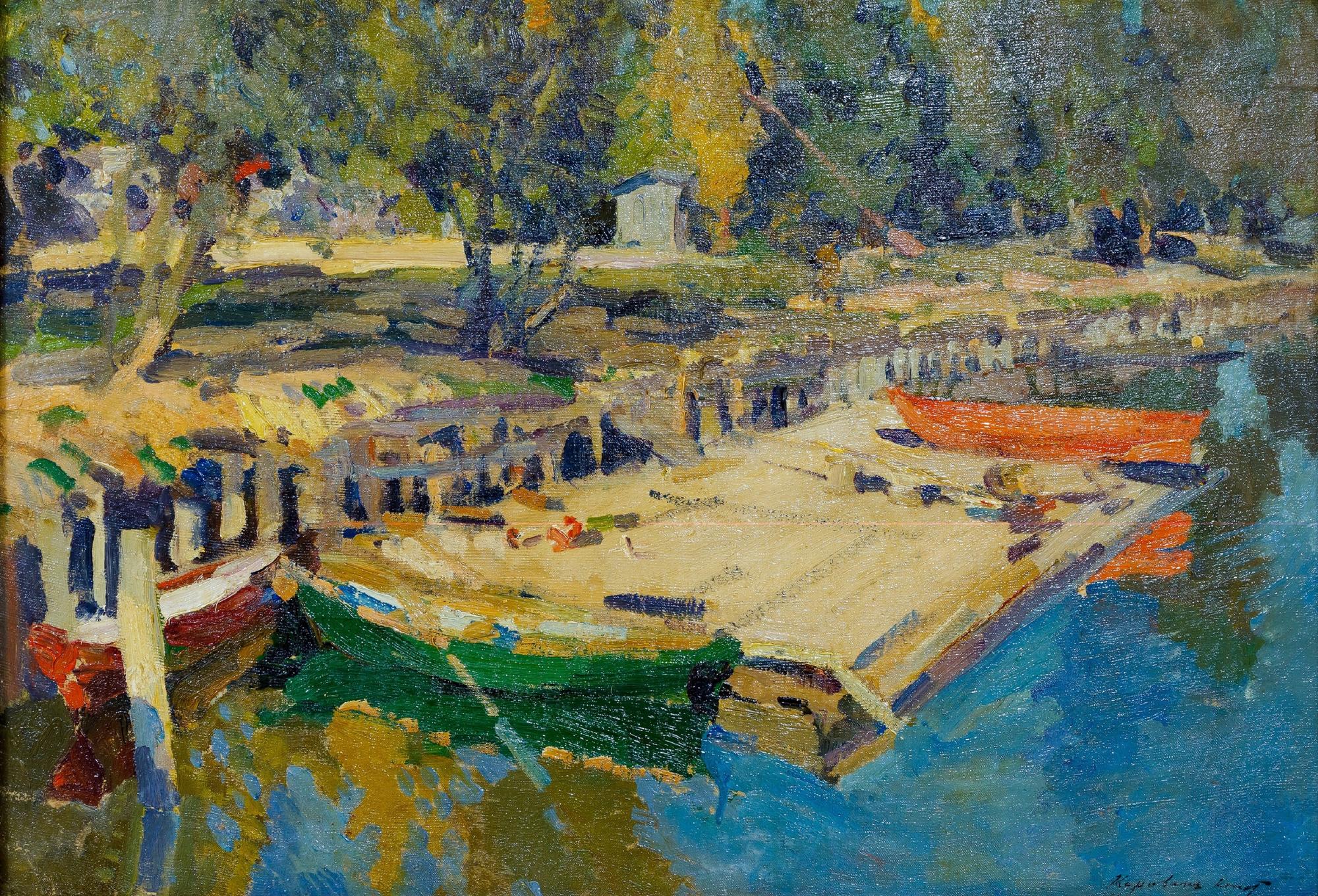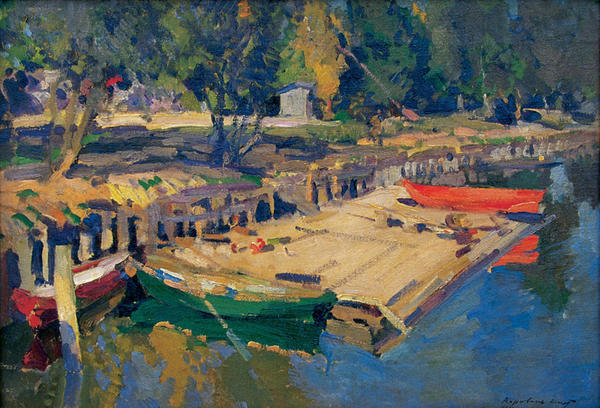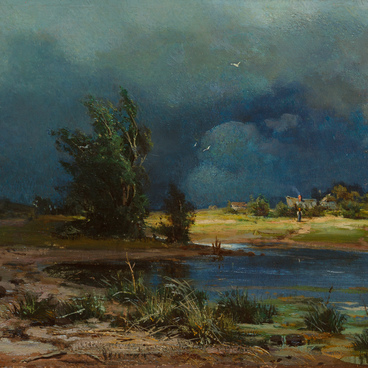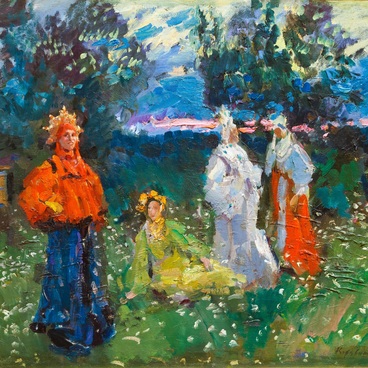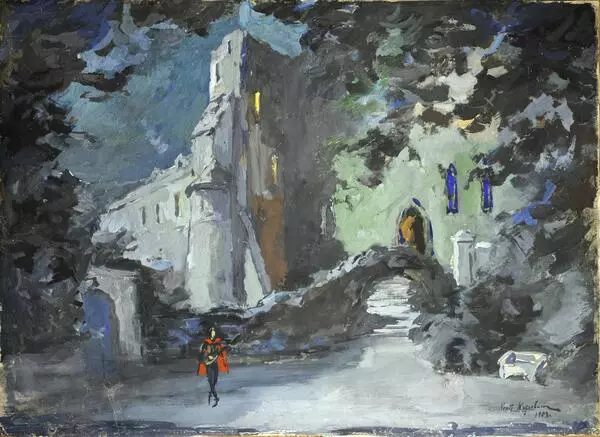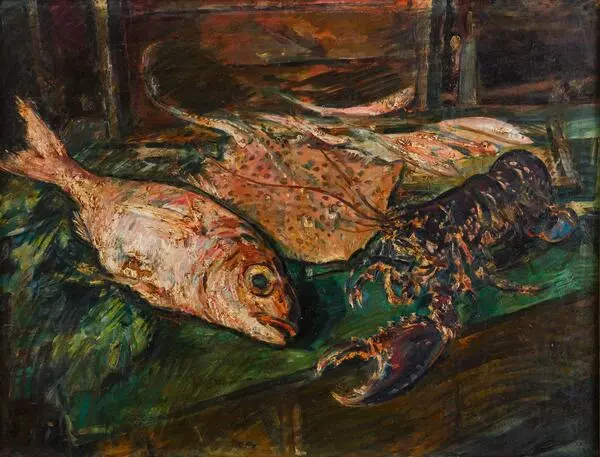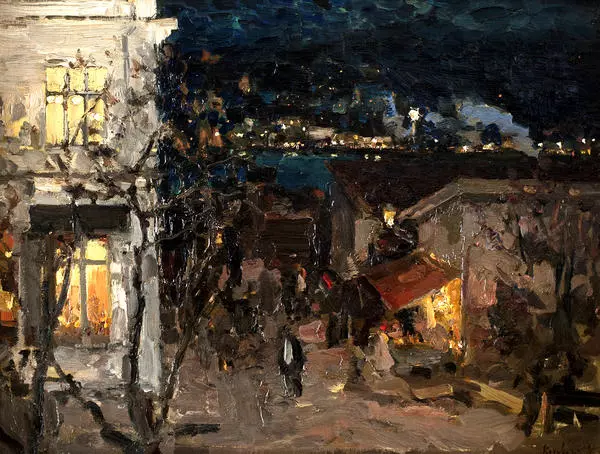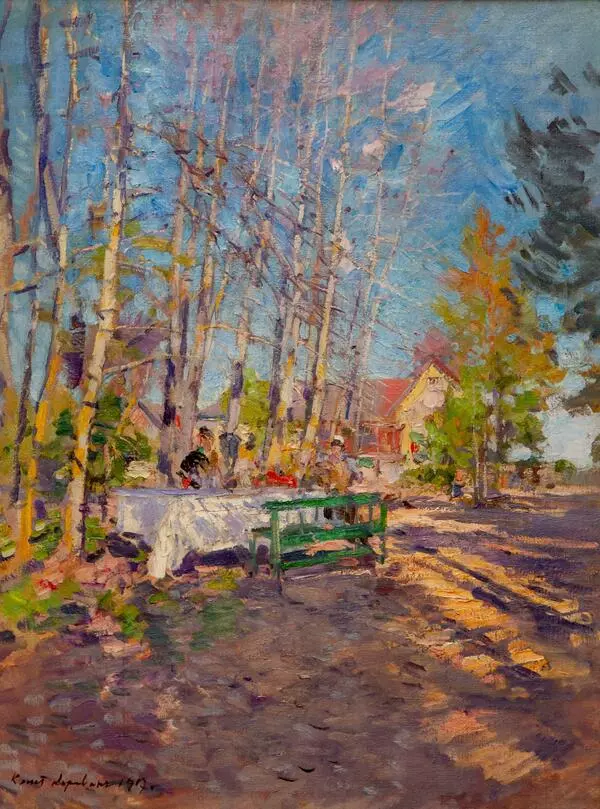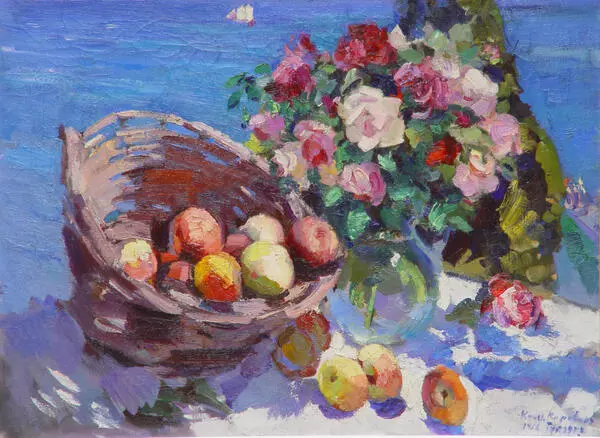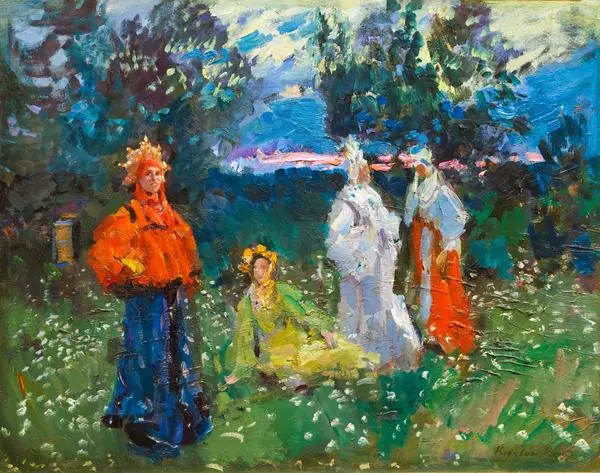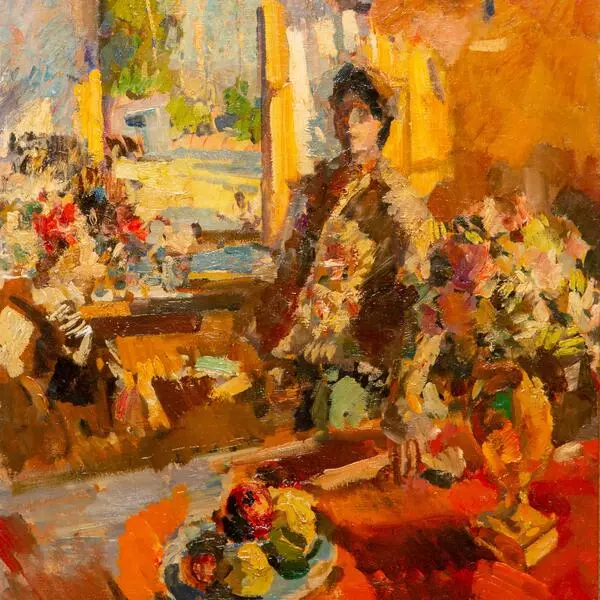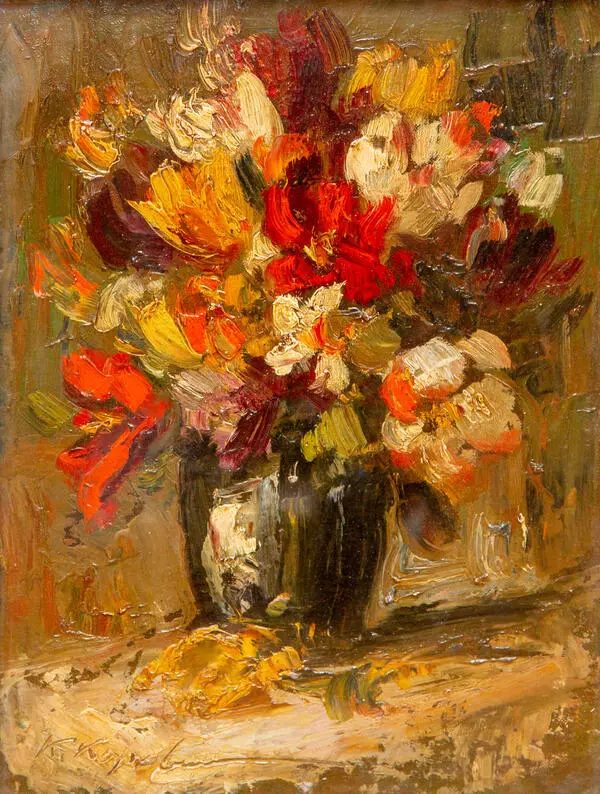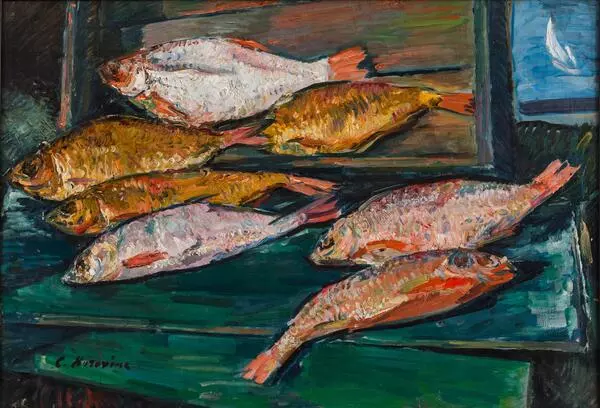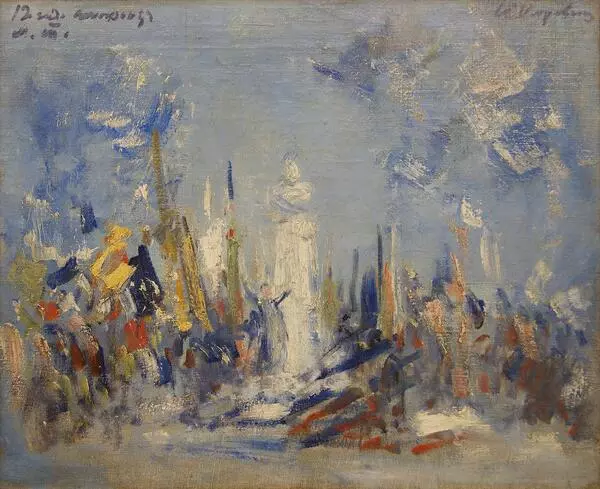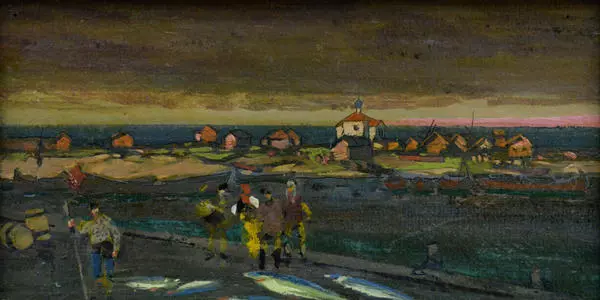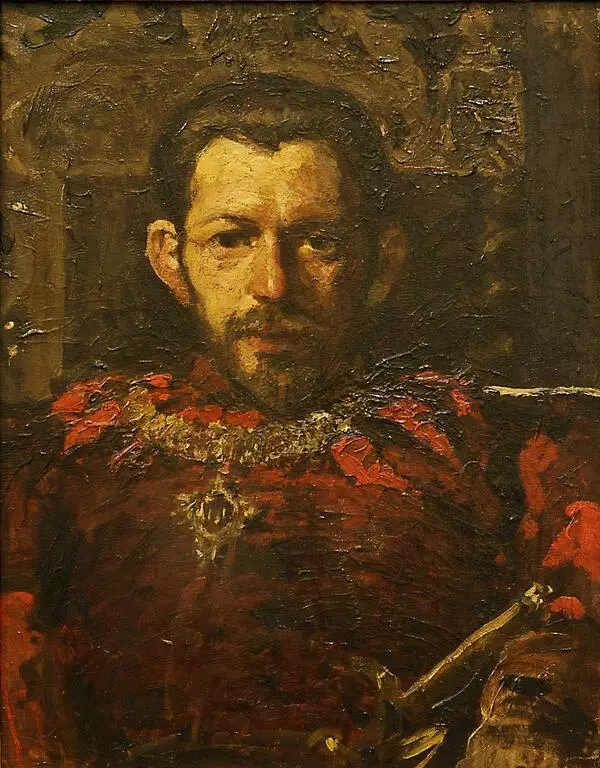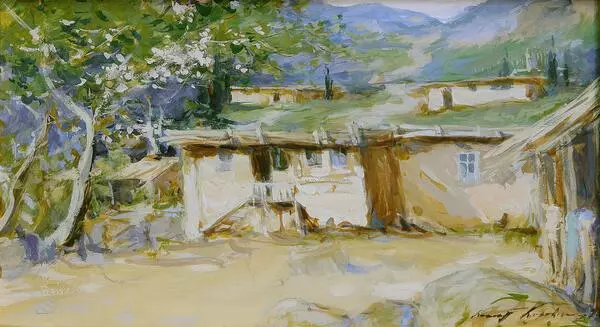The painting Boat Station from the collection of the Khanty-Mansiysk State Museum of Fine Arts is a summer landscape by Russian painter Konstantin Korovin.
In the early 1900s, Korovin was captivated by southern, summertime, studies: he produced them swiftly and in large numbers. Be it in the south of France or on the Crimean seashore, the artist excelled at depicting masterfully the flickering of hot air, light gusts of the wind, flecks of light on the sea and the heat at noon. Somebody compared Korovin’s southern studies with little musical pieces, light, elegant and cheery. Korovin produced his Boat Station in 1910.
The painting is done in a sketch-like manner with broad pastose brush strokes that achieve additional sculpturing. Korovin arranged the composition around the diagonal of the coast that divides the landscape into two parts. The boat station is at the centre. It is a large, light, wooded raft with three moored boats, two orange and one green. In the background, the painter showed leafy trees, with human figures suggested by bright dabs of paint. In the foreground below, he painted the water’s surface reflecting trees, boats and the boat station itself. His signature is in the right lower corner, in Russian, done in black paint: Korovin KonsT. 1910.
In 2000, the landscape Boat Station by Korovin was donated by an oil company to the Generations Foundation in Khanty-Mansiysk. In 2011, the painting was transferred to the Khanty-Mansiysk State Museum of Fine Arts.
Konstantin Korovin was born in 1861 in Moscow. At the age of 14, he enrolled in the architecture department of the Moscow School of Painting, Sculpture and Architecture, and one year later he transferred to the painting department to study with Alexei Savrasov. After Savrasov left the school, Korovin moved to St Petersburg and joined the Imperial Art Academy there. Disillusioned with the formalities and the environment at the new place, he returned to Moscow to continue his studies under Vasily Polenov. Korovin visited Paris several times, where he was introduced to impressionism, and travelled north with Valentin Serov. At the beginning of the 20th century, Korovin started working with theatres, producing sets and sketches of costumes. Late in 1922, Korovin left for Paris and never returned back to the Soviet Union. He died in 1939 in France.
In the early 1900s, Korovin was captivated by southern, summertime, studies: he produced them swiftly and in large numbers. Be it in the south of France or on the Crimean seashore, the artist excelled at depicting masterfully the flickering of hot air, light gusts of the wind, flecks of light on the sea and the heat at noon. Somebody compared Korovin’s southern studies with little musical pieces, light, elegant and cheery. Korovin produced his Boat Station in 1910.
The painting is done in a sketch-like manner with broad pastose brush strokes that achieve additional sculpturing. Korovin arranged the composition around the diagonal of the coast that divides the landscape into two parts. The boat station is at the centre. It is a large, light, wooded raft with three moored boats, two orange and one green. In the background, the painter showed leafy trees, with human figures suggested by bright dabs of paint. In the foreground below, he painted the water’s surface reflecting trees, boats and the boat station itself. His signature is in the right lower corner, in Russian, done in black paint: Korovin KonsT. 1910.
In 2000, the landscape Boat Station by Korovin was donated by an oil company to the Generations Foundation in Khanty-Mansiysk. In 2011, the painting was transferred to the Khanty-Mansiysk State Museum of Fine Arts.
Konstantin Korovin was born in 1861 in Moscow. At the age of 14, he enrolled in the architecture department of the Moscow School of Painting, Sculpture and Architecture, and one year later he transferred to the painting department to study with Alexei Savrasov. After Savrasov left the school, Korovin moved to St Petersburg and joined the Imperial Art Academy there. Disillusioned with the formalities and the environment at the new place, he returned to Moscow to continue his studies under Vasily Polenov. Korovin visited Paris several times, where he was introduced to impressionism, and travelled north with Valentin Serov. At the beginning of the 20th century, Korovin started working with theatres, producing sets and sketches of costumes. Late in 1922, Korovin left for Paris and never returned back to the Soviet Union. He died in 1939 in France.
